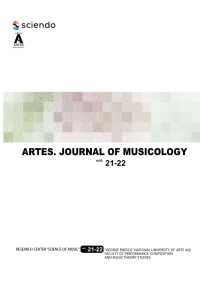From ethnomusicologist to composer. Sándor Veress and the Moldavian Collection
DOI:
https://doi.org/10.35218/Keywords:
Sándor Veress, Csángó music, Moldavian Collection, Paul Sacher CollectionAbstract
As a student of Zoltán Kodály and Béla Bartók, but also a close collaborator of László Lajtha at the Hungarian Ethnographic Museum in Budapest, and later of Béla Bartók at Folk Department of the Hungarian Academy of Science, Sándor Veress followed the path of his masters regarding the relation with folklore music. In 1930, he undertook an expedition in Moldavia, Romania, to collect music from the Csángó population, a small Hungarian speaking community, of catholic faith, living in the east of the Carpathian Mountains. In the seven villages he has visited, he collected, with the help of the phonograph, 138 folk songs on 57 wax cylinders, taking in the same time around 60 pictures and documenting the whole expedition in a journal. Following this journey, during the 30’s, Sándor Veress not only transcribed and analyzed the entire material, but also selected some of the melodies and used them as theme for his own choir arrangements and chamber music compositions.
Downloads
Published
Issue
Section
License
Copyright (c) 2023 ARTES. JOURNAL OF MUSICOLOGY

This work is licensed under a Creative Commons Attribution-NonCommercial 4.0 International License.

